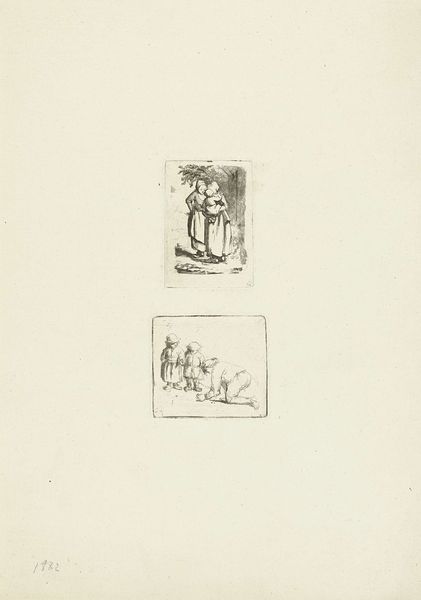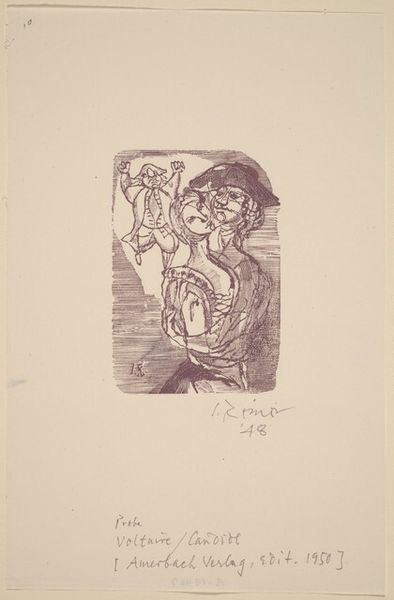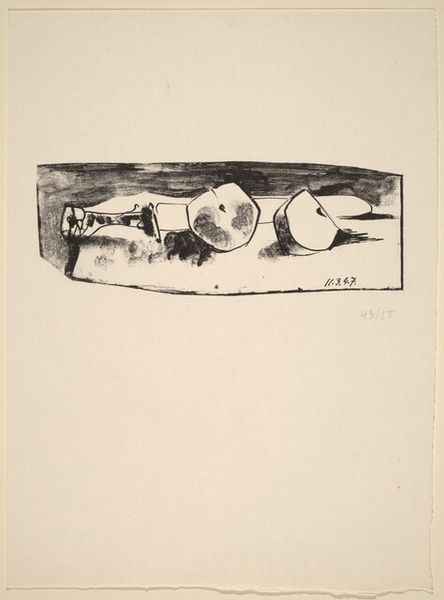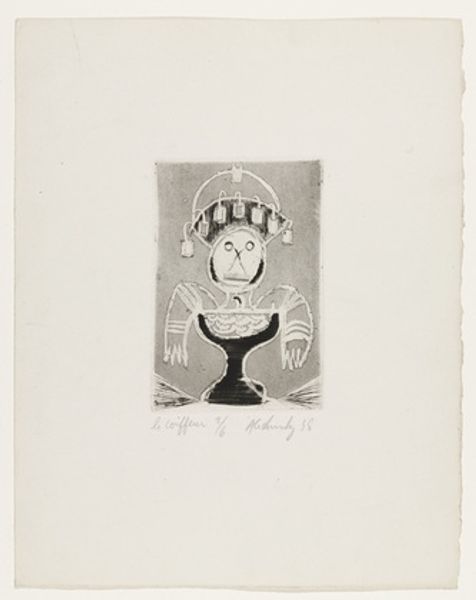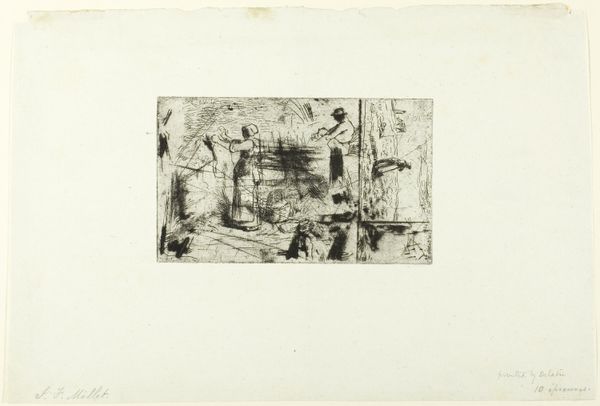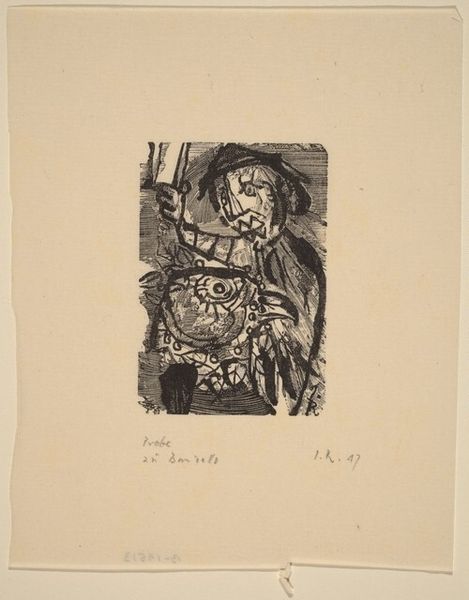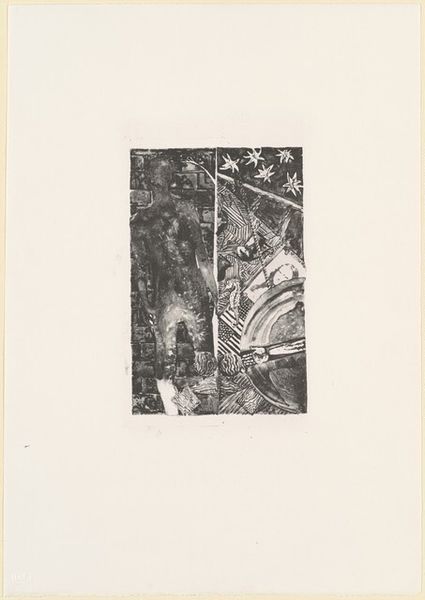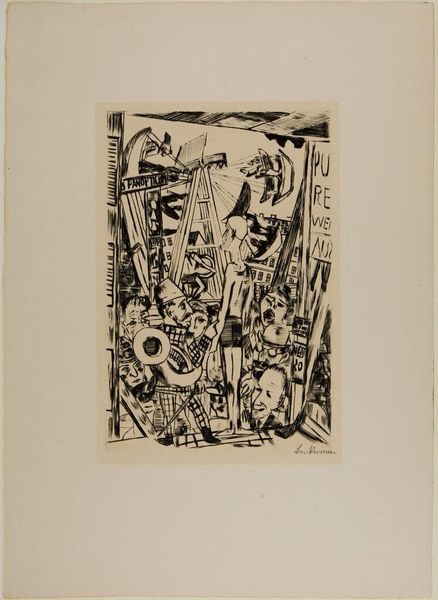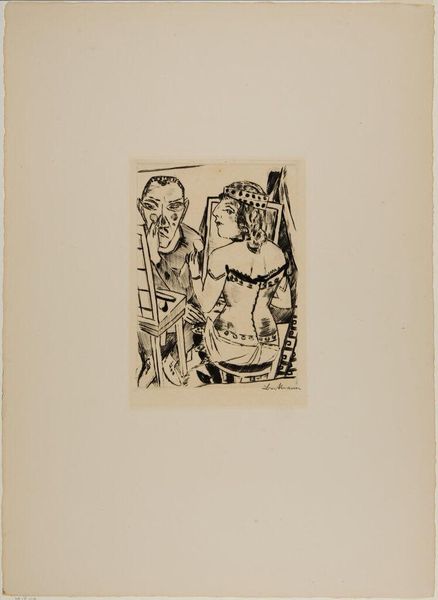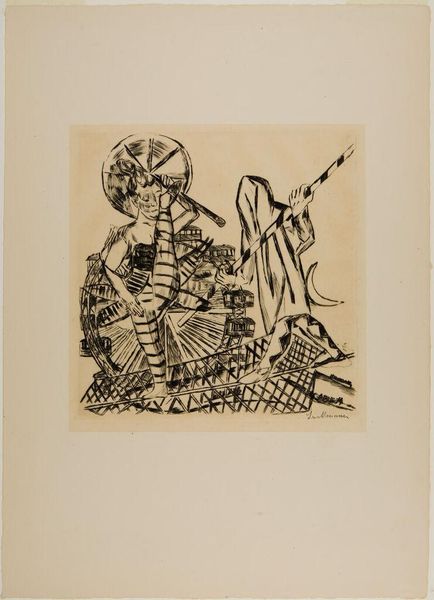
graphic-art, print, ink
#
graphic-art
#
cubism
#
ink drawing
# print
#
ink
#
abstraction
#
line
Copyright: National Gallery of Art: CC0 1.0
Curator: My first impression of this piece is the stark contrast! It's quite moody despite the simple subject matter. Editor: We are looking at "Le petit pot de fleurs," or "Small Pot of Flowers," a 1947 print by Pablo Picasso. It is rendered in ink, using strong lines and shading. The fact that this is a print immediately brings the production aspect into focus. What can we tell from that about its accessibility in Picasso's time? Curator: Potentially mass-produced, and intended for wider distribution, so perhaps speaking to the middle class, a reflection on post-war austerity even, depicted by the inexpensive material. Editor: It’s striking how, even in this modest medium, Picasso's style comes through so clearly. You can trace his explorations with Cubism, particularly in the fragmented presentation of the pot and flowers. He takes an everyday item and fractures its form. It’s an interesting example of how artists leverage institutions like printmaking to reach broad audiences with challenging visual ideas. How do you see that fracturing, specifically as it relates to the materiality of the piece? Curator: Look at the rough quality of the lines and the visible texture created by the ink, almost like the materials themselves are rejecting classical, smooth representation. It disrupts traditional expectations around the print as a polished product. I'm drawn to the physical act of applying the ink, suggesting labor, challenging any separation of ‘high’ art from craft. Editor: And I wonder how audiences reacted to seeing such deconstructed forms reproduced for mass consumption? This could’ve been quite challenging to typical art viewers expecting refined, classically beautiful imagery. What social commentary might that be reflecting? Curator: Maybe questioning what is considered precious. I keep thinking about consumption; buying this would allow engagement with revolutionary art at a lower economic threshold than painting, suggesting democratized value. The very making of this art opens an invitation for critique. Editor: Agreed. I find myself looking past just the image itself toward the larger implications of what Picasso chose to create and reproduce with this artwork. Thanks to Picasso’s legacy this piece can serve as an indicator of how imagery moves within social spheres. Curator: It highlights the tensions between art and the everyday and really urges us to examine value, making the means as worthy of study as the subject matter.
Comments
No comments
Be the first to comment and join the conversation on the ultimate creative platform.

